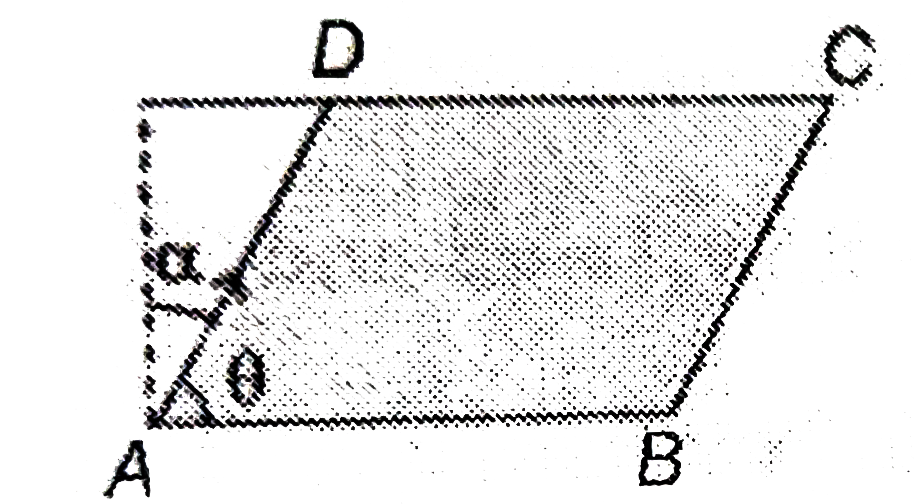Two adjacent sides of a parallelogram are given by The side is rotated by an acute angle in the plane of the parallelogram so that becomes If makes a right angle with the side then the cosine of the angel is given by b. c. d.
The correct Answer is:B
angle 0 between is
Since

Topper's Solved these Questions
- BOOK - IIT JEE PREVIOUS YEARCHAPTER - VECTOR ALGEBRAEXERCISE - Scalar Product of two vectors (Objective Question II)1videos
VECTOR ALGEBRA
- BOOK - IIT JEE PREVIOUS YEARCHAPTER - VECTOR ALGEBRAEXERCISE - Scalar Product of two vectors (Numerical Value1videos
VECTOR ALGEBRA
- BOOK - IIT JEE PREVIOUS YEARCHAPTER - TRIGONOMETRICAL RATIOS AND IDENTITIESEXERCISE - HEIGHT AND DISTANCE10videos
TRIGONOMETRICAL RATIOS AND IDENTITIES
Similar Questions
Knowledge Check
- Question 1 - Select One
The adjacent sides of a parallelogram is represented by vectors 2ˆi+3ˆj and ˆi+4ˆj. The area of the parallelogram is :
A5 unitsB3 unitsC8 unitsD11 units
If →a=3ˆi−ˆj+2ˆk and →b=2ˆi+ˆj−ˆk then find(→a×→b)→a.
View SolutionDetermine the area of the parallelogram whose adjacent sides are formed by the vectors →A=ˆi−3ˆj+ˆkand→B=ˆi+ˆj+ˆk.
View SolutionIf in parallelogram ABCD, diagonal vectors are →AC=2ˆi+3ˆj+4ˆk and →BD=−6ˆi+7ˆj−2ˆk, then find the adjacent side vectors →AB and →AD
View SolutionThe adjacent sides of a parallelogram are represented by the vectors →a=ˆi+ˆj−ˆk and →b=−2ˆi+ˆj+2ˆk. Find unit vectors parallel to the diagonals of the parallelogram.
View SolutionFind the area of the parallelogram whose adjacent sides are determined by the vectors →a=ˆi−ˆj+3ˆkand→b=2ˆi−7ˆj+ˆk.
View SolutionThe diagonals if a parallele-gram are representde by →d1=2ˆI+3ˆj−5ˆk and →d2=6ˆI+5ˆj−3ˆk. Find the area of the parallelogram.
View SolutionFind the area of the parallelogram whose adjacent sides are determined by the vectors →a=ˆi−ˆj+3ˆk and →b=2ˆi−7ˆj+ˆk.
View Solution

